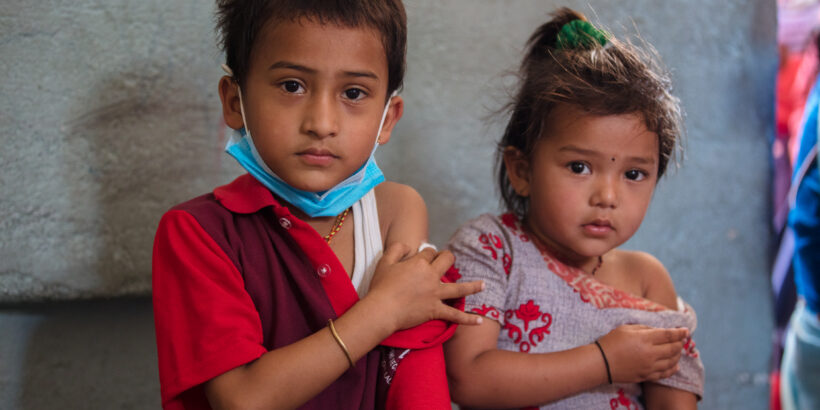Vaccines save lives, but more than 1 in 5 children worldwide have missed crucial lifesaving vaccines, with the majority residing in the lowest resourced communities. Each year in April, World Immunization Week highlights the importance of vaccines and the protection provided against many diseases. This year we come together to focus on “The Big Catch-Up,” an effort to restore essential immunization coverage to at least 2019 (pre-pandemic) levels and strengthen primary health care to deliver immunization services to the 67 million children who missed routine vaccinations during the pandemic. Introducing new vaccines like typhoid conjugate vaccines (TCVs) are one approach for countries to improve coverage for other routine immunizations.
Integrated introduction campaigns reach missed children
TCV can be co-administered with vaccines for other antigens, including measles, rubella, human papillomavirus (HPV), polio, yellow fever, and Meningitis A. It can also be administered alongside other early childhood interventions such as vitamin A. Multi-antigen vaccination campaigns allow health officials to take advantage of existing infrastructure investments, logistics planning, and social mobilization efforts to introduce a new vaccine and expand its impact. This can help reduce costs and maximize efficiency. In Zimbabwe, the government used the TCV introduction campaign to also provide polio and HPV vaccines and vitamin A supplementation.
Detailed microplanning for new vaccine introduction can also help identify children who may have been missed by previous campaigns. Providing multiple vaccines during one campaign can increase vaccination coverage for other routine vaccines since caregivers only have to bring their children to one site. This strategy also helps to reduce transport and logistics costs for families and the health system.
New vaccines can strengthen immunization systems
TCV introduction can help strengthen a country’s immunization system. When countries receive funding from Gavi, the Vaccine Alliance to introduce TCV, resources to support vaccine delivery are included. The resources put toward improved supply chain and cold chain infrastructure are pivotal for the success of the TCV campaign. An added benefit is that the improvements made specifically for the TCV campaign have broad implications that support the whole routine immunization system. The influx of funding to support TCV introduction can allow countries to make more long-term investments like improved cold chain systems, which help ensure all vaccines remain safe during transport. These investments benefit countries’ routine immunization programs for years to come.
Integrated campaigns can improve healthcare worker training
It is vital to prioritize investment in primary healthcare, including healthcare workers, to reach children who missed routine immunizations. Training healthcare workers to carry, store, and administer vaccines, as well as monitor children post-vaccination is critical. The trainings conducted as part of the preparation for TCV campaigns can increase knowledge and build healthcare worker capacity to deliver multiple vaccines in a more efficient way. By building their capacity to deliver vaccines efficiently, healthcare workers can help improve the overall effectiveness of the primary healthcare system.
Time to catch up on accurate information about vaccines
Any vaccination campaign provides an opportunity to share accurate and clear information about vaccines. An introductory TCV campaign is no different; when messaging about TCV or any other vaccine, there is an opportunity to inform communities about the overall benefits of vaccines and disease prevention. Campaigns allow vaccinators and outreach teams to connect with the community and build trust while sharing information and encouraging them to access and accept TCV. New vaccine introduction campaigns also offer a strategic time to remind families to access routine immunization services during well baby facility visits. Vaccination campaigns that use clear, concise, and scientifically accurate messages, including those for TCV, can help reinstall public confidence in vaccination.
TCV as a catalyst for catch-up
The “Big Catch-Up” is a big global goal and we have work to do. However, it is crucial that the global health community think strategically, focusing on immunization holistically to make progress against the goal of protecting children against all vaccine-preventable diseases. We need to collectively think about reaching children with routine vaccines alongside new vaccines. And we also need to consider how we can simultaneously build the capacity of—and confidence in—the local health system. As we celebrate this week, let us reflect on the progress made and the work ahead. By working collectively, collaboratively, and creatively, taking on typhoid can be a strategic part of the big catch-up.
Photo: Two siblings sit after receiving TCV in Nepal’s introduction campaign. PATH/Rocky Prajapati.



